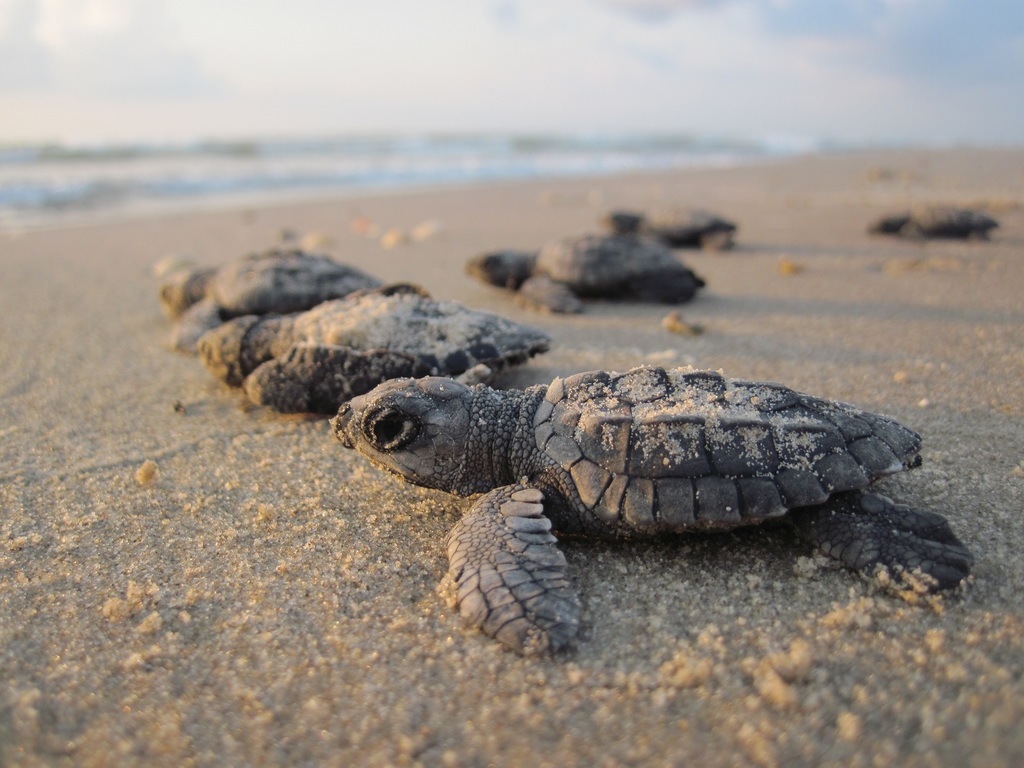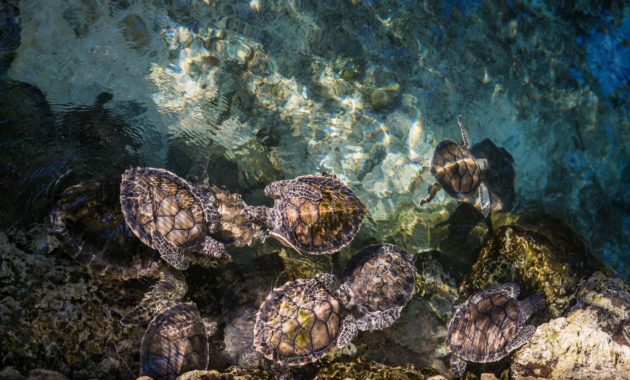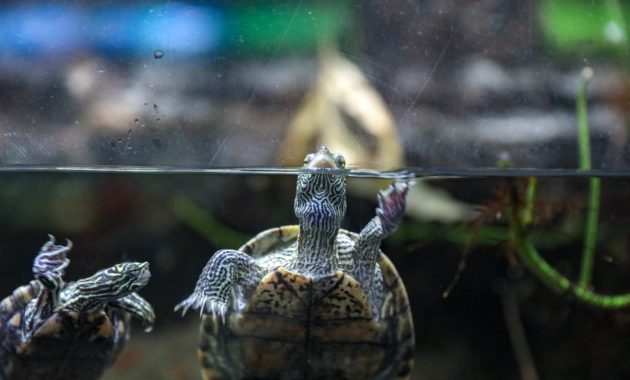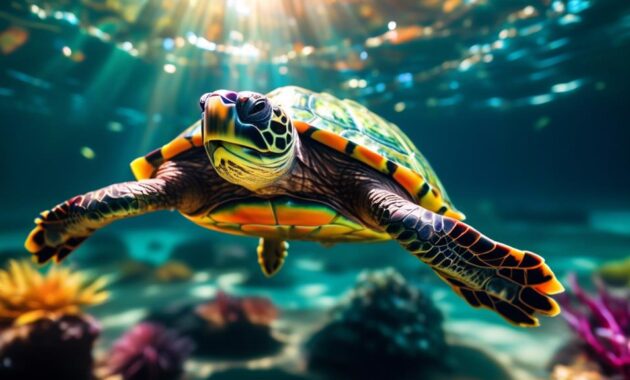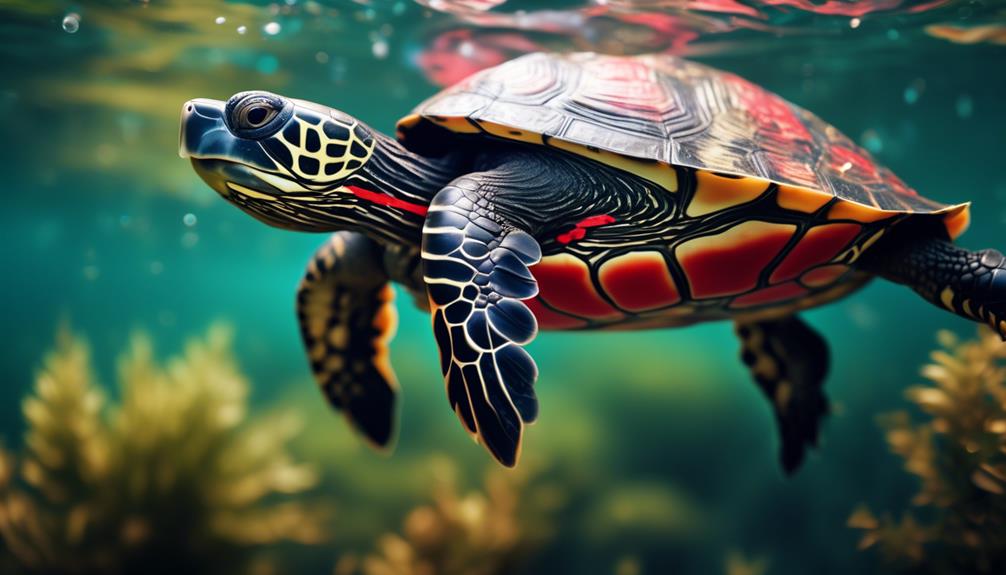
Have you ever wondered about the mysteries surrounding the Northern Red-Bellied Turtle? Many theories have circulated about this intriguing creature, but what is the truth behind its enigmatic nature?
As you explore the depths of this discussion, you will uncover fascinating facts about its physical attributes, habitat, and behavior.
But there’s more to this story than meets the eye. Stay tuned to unravel the secrets of the Northern Red-Bellied Turtle and unlock a world of wonder that will leave you amazed.
Key Takeaways
- The Northern Red-Bellied Turtle is a semi-aquatic turtle native to the freshwater bodies of water in the northeastern United States.
- It has a medium size, with a brownish carapace and a distinct red pattern, while females can be almost completely black.
- The turtle is shy and tends to hide or dive into water when scared.
- It can be housed in an indoor aquarium or outdoor pond, with a water depth of 1-2 feet or more for adult turtles and a solid platform for basking.
General Information
The Northern Red-Bellied Turtle is a semi-aquatic turtle with a medium size and varying length. It’s known for its distinctive appearance, with a brownish carapace adorned with a red pattern and a broad red line on the marginal scutes. The females of this species can be almost completely black. The undersides of the marginals are yellow to red with black spots.
In terms of habitat, these turtles are mostly found in freshwater bodies of water such as ponds, creeks, streams, lakes, and rivers, spanning from New Jersey to North Carolina and Massachusetts. They’ve a shy nature and tend to hide or dive into water when scared.
With their low maintenance care requirements, the Northern Red-Bellied Turtle is an intriguing species to learn about and observe.
Size and Lifespan
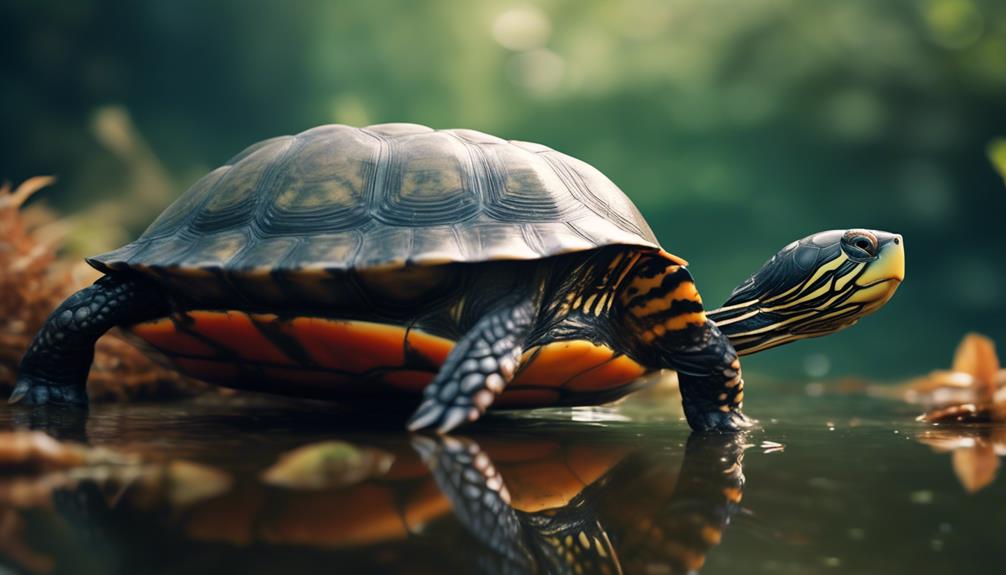
With a medium size and a lifespan ranging from 40 to 55 years, the Northern Red-Bellied Turtle is an intriguing species to study and care for. When it comes to their size, these turtles vary in length, making them a moderate-sized species. As for their lifespan, they can live for several decades, providing you with years of companionship and observation.
Here are a few things to consider about their size and lifespan:
- Size:
- Medium-sized turtles that can vary in length.
- Their size makes them manageable and easier to care for.
- A moderate size allows them to adapt well to different housing options.
- Lifespan:
- Can live for 40 to 55 years, giving you a long-term commitment.
- Their longevity provides ample opportunities to study their behavior and biology.
- A longer lifespan allows you to form a lasting bond with these fascinating creatures.
Understanding the size and lifespan of the Northern Red-Bellied Turtle is crucial for providing them with the care and environment they need to thrive.
Semi-Aquatic Nature
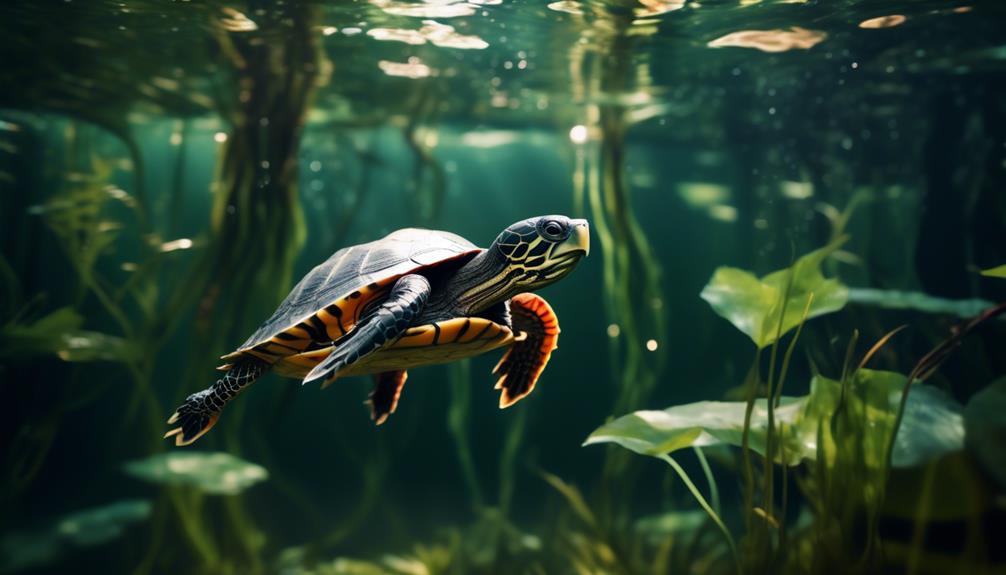
To truly understand the Northern Red-Bellied Turtle, it is important to delve into its semi-aquatic nature. This unique species spends a significant amount of time both in water and on land, making it well adapted to its environment. Here is a table summarizing the key aspects of its semi-aquatic behavior:
| Semi-Aquatic Behavior | Description |
|---|---|
| Habitat | Freshwater bodies of water such as ponds, creeks, streams, lakes, and rivers |
| Behavior | Shy and tends to hide or dive into water when scared |
| Basking | Requires a solid platform for drying off and a source of UVB light |
| Water Depth | Adult turtles require water depth of 1-2 feet or more |
| Outdoor Enclosure | Can be housed in a fenced pond with smooth rocks for basking and UVB provided by the sun |
Understanding the semi-aquatic nature of the Northern Red-Bellied Turtle is crucial for providing appropriate care and creating a suitable habitat for this fascinating species.
Habitat and Behavior
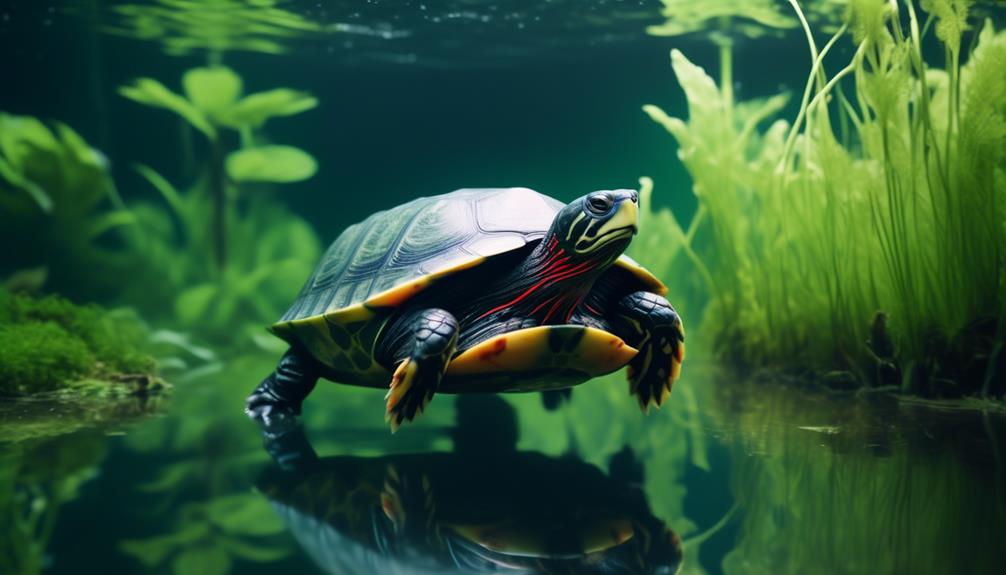
To fully understand the habitat and behavior of the Northern Red-Bellied Turtle, one must delve into its natural environment and how it interacts with its surroundings.
- Habitat:
- Freshwater bodies of water, ponds, creeks, streams, lakes, rivers
- Geographic range: New Jersey to North Carolina, Massachusetts
- Comparable breeds: Florida Red-Bellied Turtle, Alabama Red-Bellied Turtle
- Behavior:
- Shy, tend to hide or dive into water when scared
The Northern Red-Bellied Turtle prefers to reside in freshwater habitats such as ponds, creeks, streams, lakes, and rivers. Its geographic range spans from New Jersey to North Carolina and Massachusetts. In terms of behavior, these turtles display a shy nature and often retreat or dive into the water when they feel threatened. It’s interesting to note that they share similarities with other breeds such as the Florida Red-Bellied Turtle and the Alabama Red-Bellied Turtle.
Comparison With Similar Breeds
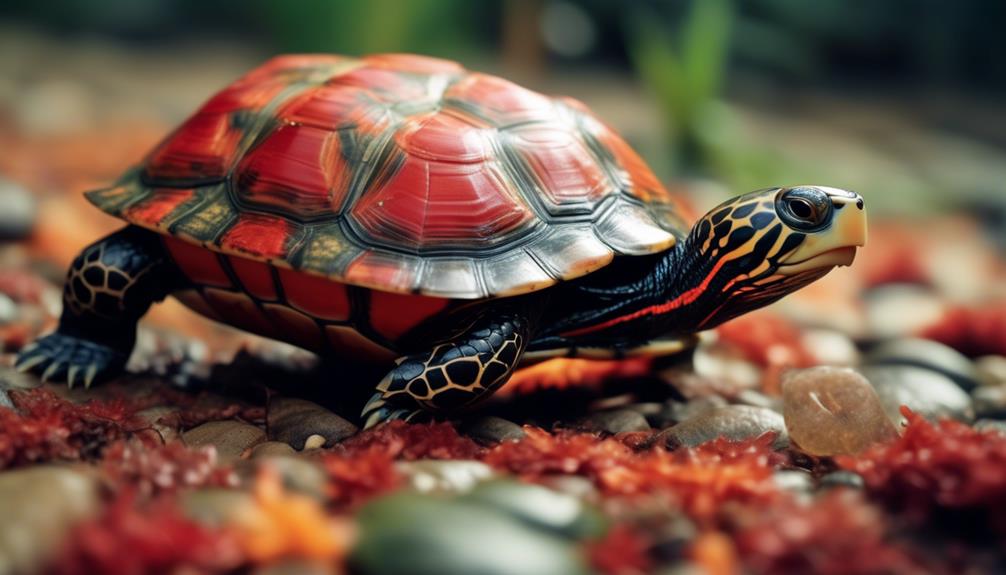
The Northern Red-Bellied Turtle can be compared to other breeds such as the Florida Red-Bellied Turtle and the Alabama Red-Bellied Turtle in terms of its habitat and behavior. These breeds share a similar native habitat, as they can be found in freshwater bodies of water such as ponds, creeks, streams, lakes, and rivers.
In terms of behavior, the Northern Red-Bellied Turtle, along with its counterparts, tends to be shy and will often hide or dive into water when scared. This behavior is a common trait among these breeds.
Geographic Range
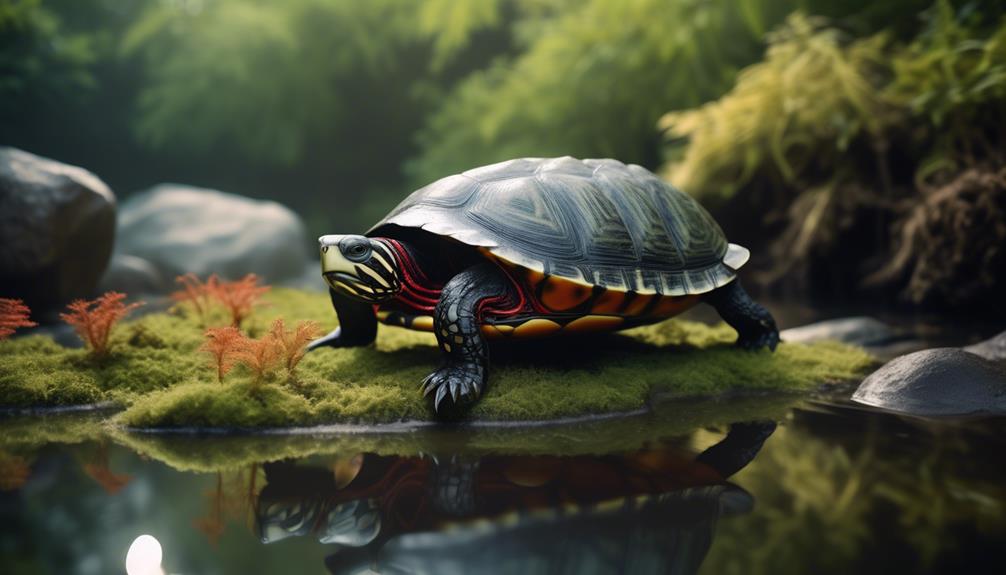
Northern Red-Bellied Turtles can be found in the freshwater bodies of water, ponds, creeks, streams, lakes, and rivers spanning from New Jersey to North Carolina and Massachusetts. If you happen to live in any of these states, you may have encountered this fascinating turtle species in your local waterways.
Here are a few interesting facts about the geographic range of Northern Red-Bellied Turtles:
- These turtles are native to a wide range of habitats, including rivers, lakes, and even small streams. They’ve adapted to different types of freshwater environments.
- Their distribution extends along the east coast of the United States, from New Jersey in the north to North Carolina and Massachusetts in the south. This means that they can be found in various states within this region.
- The availability of suitable water bodies is crucial for the survival of Northern Red-Bellied Turtles. They rely on these habitats for food, shelter, and breeding.
Physical Description
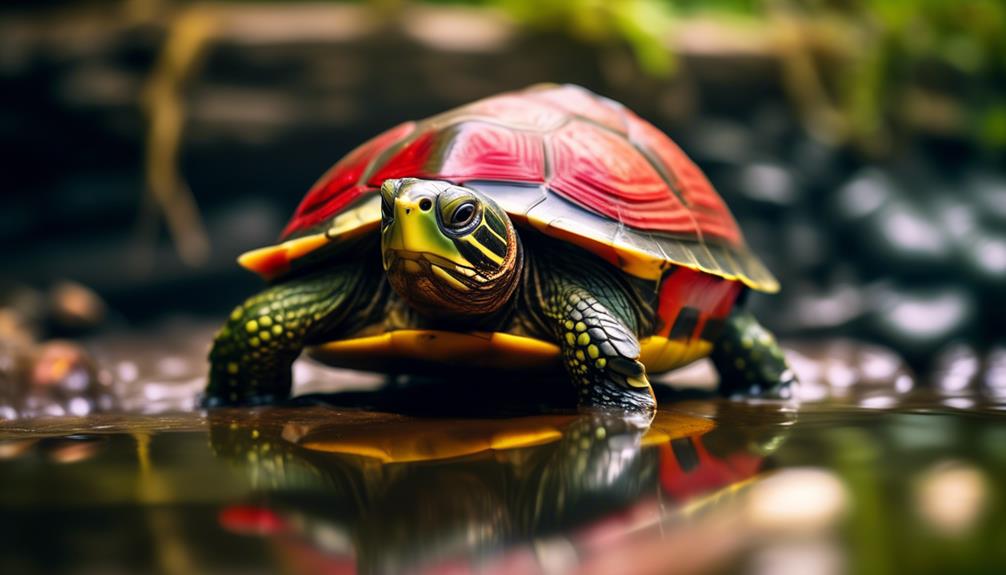
After learning about the geographic range of the Northern Red-Bellied Turtle, let’s now explore its physical description. The Northern Red-Bellied Turtle has a distinct appearance that sets it apart from other turtle breeds. Here is a table summarizing its physical characteristics:
| Physical Description | |
|---|---|
| Carapace | Brownish with red pattern, broad red line on marginal scutes |
| Underside of marginals | Yellow to red with black spots |
| Females | Can be almost completely black |
| Head | Dark brown with thin yellow stripes, distinct streak running down middle forming arrow shape |
| Plastron | Hingeless, smaller than carapace |
These unique features contribute to the enigmatic beauty of the Northern Red-Bellied Turtle. Its carapace with its red pattern and broad red line on the marginal scutes make it easily identifiable. Females, on the other hand, can be predominantly black. The head showcases a dark brown color with thin yellow stripes, while a distinct streak runs down the middle, forming an arrow shape. The plastron is hingeless and smaller compared to the carapace. It’s truly a fascinating creature to behold.
Housing and Environment
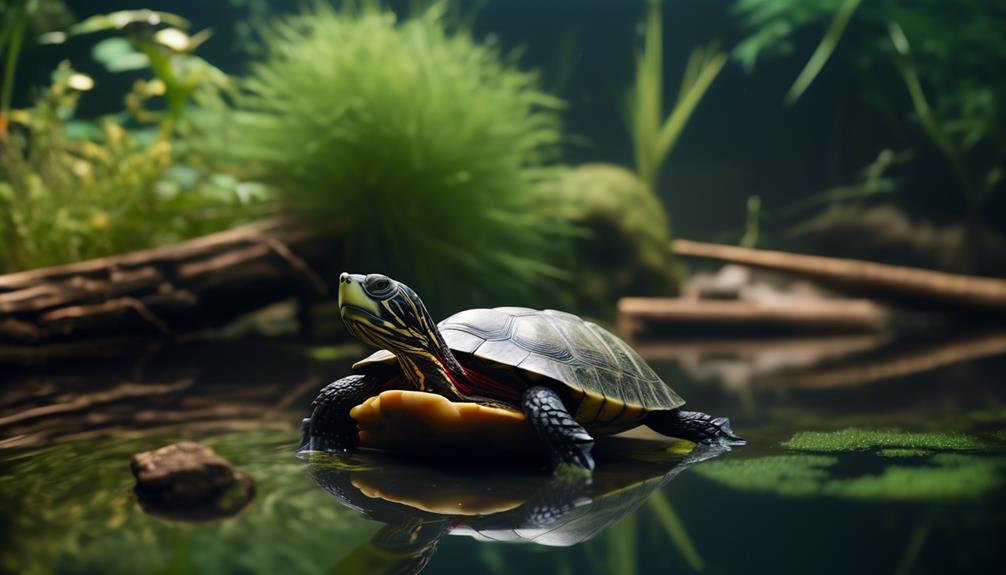
To provide optimal care for a Northern Red-Bellied Turtle, it’s important to create a suitable housing and environment. Here are some key points to consider:
- Housing options:
- Indoor aquarium or outdoor pond
- Water depth:
- 1-2 feet or more for adult turtle
- Basking:
- Provide solid platform for drying off
- UVB light source
- Temperature:
- Basking site 85F
- Water temperature 75F
- Use water heater if needed
- Outdoor enclosure:
- Fenced pond
- Smooth rocks for basking
- UVB from sun
Creating the right environment for your Northern Red-Bellied Turtle is crucial for their well-being. Whether you choose an indoor aquarium or an outdoor pond, make sure there’s enough water depth for your turtle to swim comfortably. Additionally, provide a solid platform for them to bask and dry off, along with a UVB light source to meet their lighting needs.
Maintain a basking site temperature of 85F and a water temperature of 75F, adjusting with a water heater if necessary. If opting for an outdoor enclosure, make sure it’s fenced and has smooth rocks for basking, while also allowing access to natural sunlight for UVB exposure.
Care and Feeding
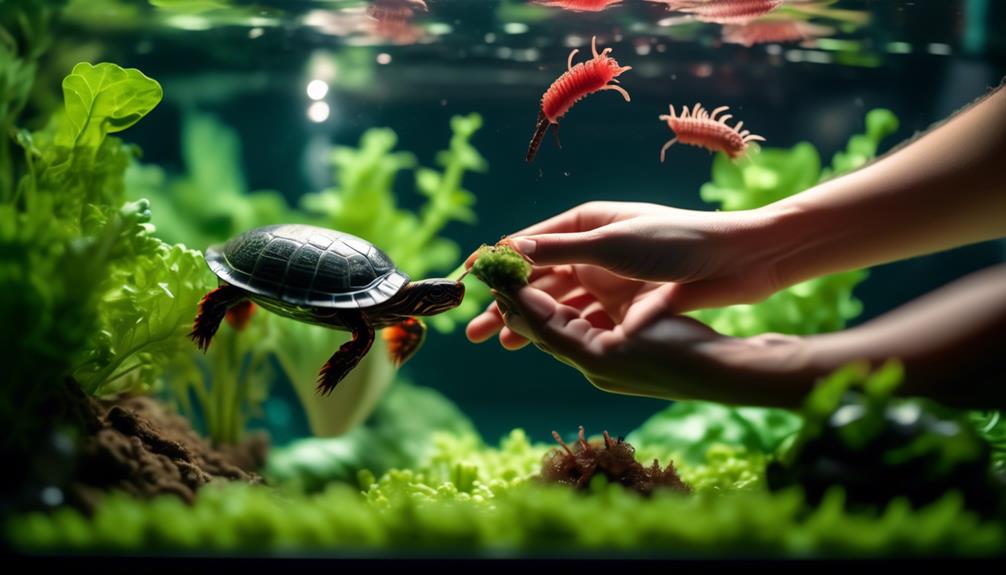
When caring for your Northern Red-Bellied Turtle, it’s essential to provide the proper care and feeding to ensure their health and well-being.
The diet of these turtles varies depending on their age. Juveniles are omnivorous, while adults are primarily herbivorous. You can feed them a variety of foods such as romaine lettuce, non-toxic aquatic plants like duckweed and coontail, as well as hydrilla and water lilies. It’s important to include a calcium supplement, like cuttlebone, in their diet to meet their nutritional needs.
Additionally, consider using a commercial turtle diet to ensure they receive all the necessary nutrients.
If you have multiple turtles, monitor their behavior for any signs of aggression. By providing the right diet and monitoring their interactions, you can ensure the well-being of your Northern Red-Bellied Turtle.
Aggression and Socialization
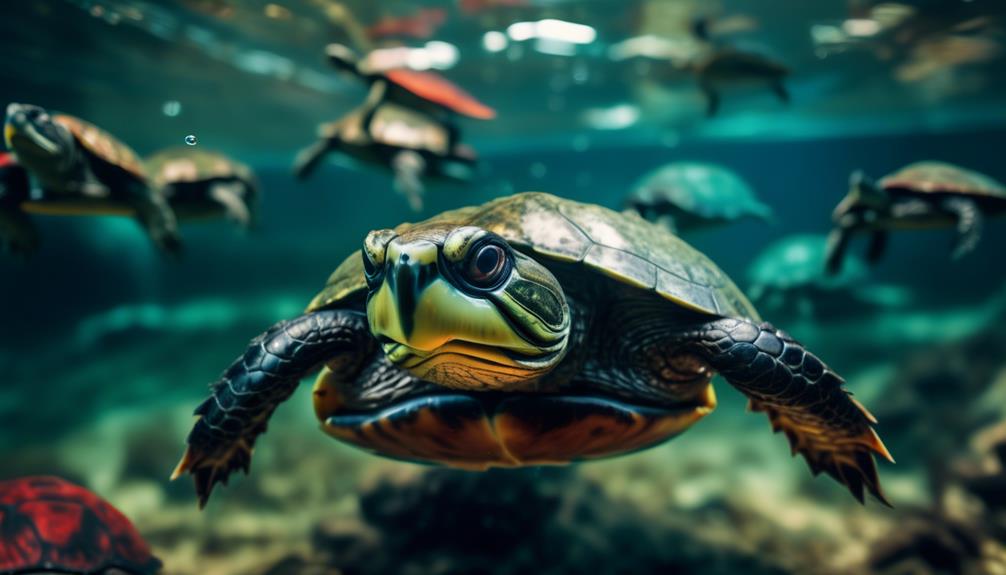
If you have multiple Northern Red-Bellied Turtles, it’s important to monitor their behavior for signs of aggression and promote socialization. Here are some tips to help you ensure a peaceful and harmonious turtle community:
- Provide enough space: Make sure each turtle has ample room to swim, bask, and explore. Overcrowding can lead to stress and aggression.
- Offer hiding spots: Create hiding places and separate basking areas to allow turtles to have their own space and reduce potential conflicts.
- Vary feeding locations: Scatter food in different areas of the tank to encourage turtles to forage independently and minimize competition.
Frequently Asked Questions
How Do Northern Red-Bellied Turtles Reproduce?
Northern red-bellied turtles reproduce by mating, with the male mounting the female. The female then lays her eggs in a nest she digs in the ground. After incubation, the hatchlings emerge and make their way to the water.
Are Northern Red-Bellied Turtles a Threatened Species?
No, Northern Red-Bellied Turtles are not a threatened species. They are semi-aquatic turtles found in freshwater bodies of water from New Jersey to North Carolina and Massachusetts.
Can Northern Red-Bellied Turtles Survive in Saltwater Environments?
No, Northern Red-Bellied Turtles cannot survive in saltwater environments. They are native to freshwater bodies of water like ponds, creeks, streams, and lakes. Saltwater would be harmful to their well-being.
Do Northern Red-Bellied Turtles Require Any Special Care During Hibernation?
During hibernation, northern red-bellied turtles require special care. You should provide a cool, dark space for them to rest, with temperatures around 40-50F. Avoid disturbing them and monitor their health throughout the hibernation period.
What Is the Average Clutch Size for Northern Red-Bellied Turtles?
The average clutch size for northern red-bellied turtles is around 6-12 eggs. It’s important to provide a suitable nesting area with a sandy substrate for the female to lay her eggs.
What Are the Differences Between the Northern Red-Bellied Turtle and the Mississippi Map Turtle?
The northern red-bellied turtle and the Mississippi map turtle are two distinct species with their own unique characteristics. While the northern red-bellied turtle is known for its red underbelly, the Mississippi map turtle is recognized for its intricate shell patterns. Both species have their own fascinating facts about Mississippi map turtle that make them special in their own right.
Conclusion
In conclusion, the Northern Red-Bellied Turtle is a captivating and enigmatic creature. With its unique physical features, semi-aquatic nature, and shy behavior, this turtle provides a fascinating glimpse into the world of freshwater turtles.
By providing the right housing, environment, and diet, you can ensure the well-being and longevity of this amazing species. So, embark on the journey of discovery and uncover the wonders of the Northern Red-Bellied Turtle.

